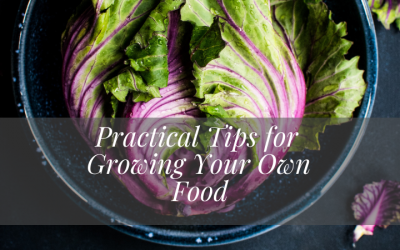In this day and age where people are becoming far more health-conscious, growing your own food is something people seem to be more open to. Not only is it a chance to know exactly what you’re eating, but it’s also a chance to reduce your grocery bill. However, some people are intimidated by the thought of growing their food at home because it can seem time-consuming or complicated. It doesn’t have to be either of those things, especially if you do your research and take the right steps. Here are a few easy ways to begin growing your own food if that’s something you’ve been contemplating.
Decide What You Want to grow
To begin with, if you want to start growing your own food, you’ve got to make a decision about what you want to grow. There are so many different types of plants, fruit, and vegetables out there and they all require different approaches. See below a few different foods that you could grow:
Fruits: If you’re looking to get your five a day straight from your garden, growing fruit may be ideal for you. Strawberries, raspberries apples, and grapes are all examples of ones you can grow at home as a beginner.
Vegetables: Instead of going to the market or supermarket every other day, you can easily grow vegetables in your garden instead. Great examples of cost-effective vegetables to grow in your garden are curly kale, tomatoes, lettuce, cucumbers, or carrots.
Farm: For those who want to eat things such as chicken, fresh eggs, and turkey, you should consider building a barn and having a farm instead; you can find out more here. It doesn’t have to be a humongous one and can be done with a reasonable amount of space.
Learn the Basics
When you learn any new skill, it’s always good to start from the basics. The same applies to planting or farming, so figure out what you need to do to lay the foundation. One of the basics for gardening is knowing when to plant as well as the best conditions for the fruit or vegetables that you’re growing. You also want to be sure that your garden is positioned where it can receive sunlight, in close proximity to water and protected from frost and excess wind.
It is also important to note that when planting vegetables in a home-sized garden, you should use fewer rows so that you need fewer paths between rows and you ultimately have more square footage for growing your crops.
Take Care of Your Soil
You’ve probably heard it before, but in order to grow your own food successfully, you’re going to need good soil. To keep your soil healthy and fertile, you could start by getting it tested to see what quality it is and how you can make it better. To change the texture of your soil, you’ll need to use organic matter and liquid nitrogen to help with the decomposition process right before fall.
Making the decision to grow your own food could be one that’s beneficial for you and your family. There are immense benefits of owning a farm or having a garden full of fresh fruits and vegetables, and most relate to improved wellbeing and a sense of satisfaction.
P.S: If you enjoyed this article, we’d love your feedback and comments on it. Also, Please Join our EAT FREE Community, where you can make some money, making the planet better!


Recent Comments